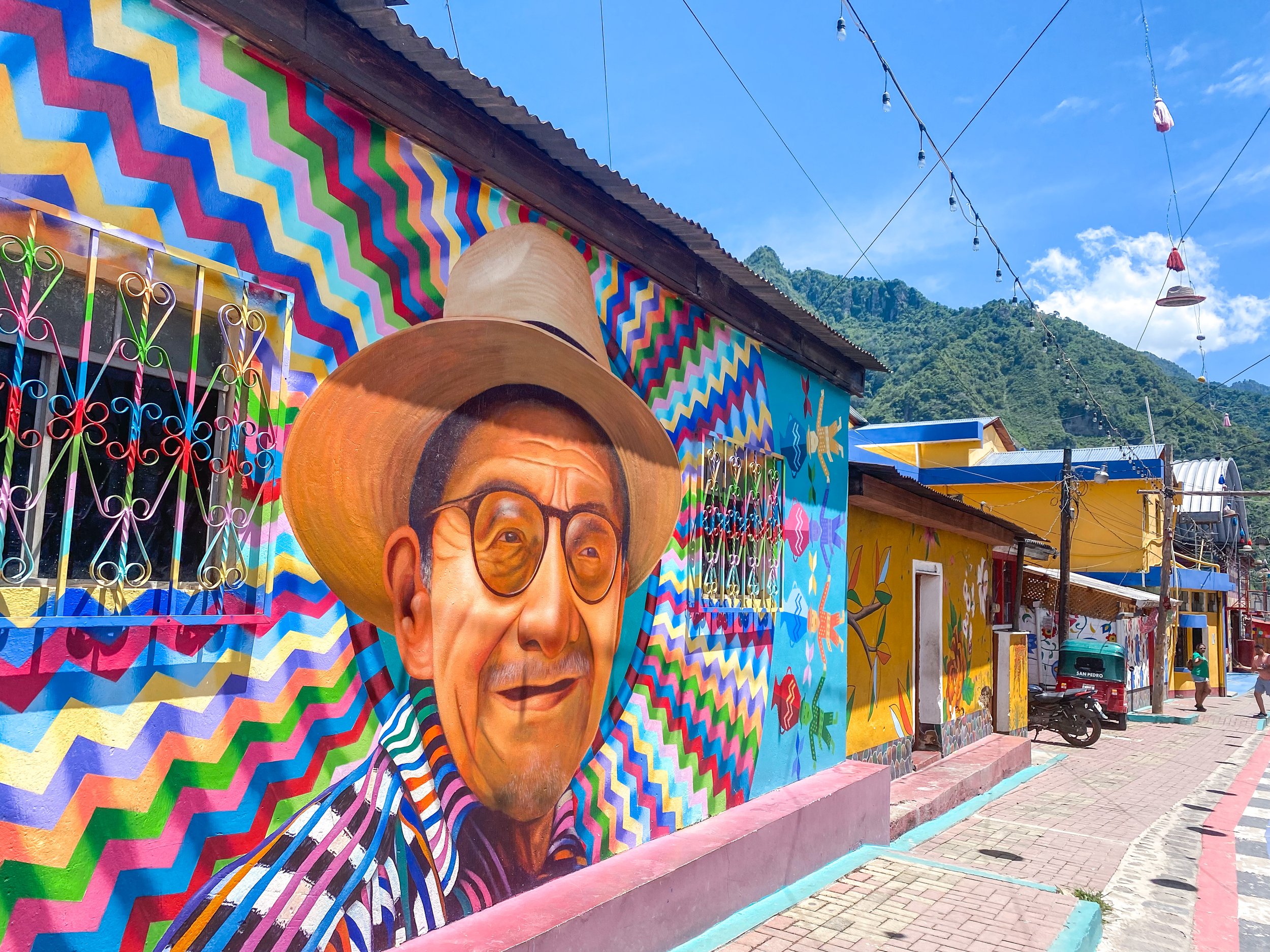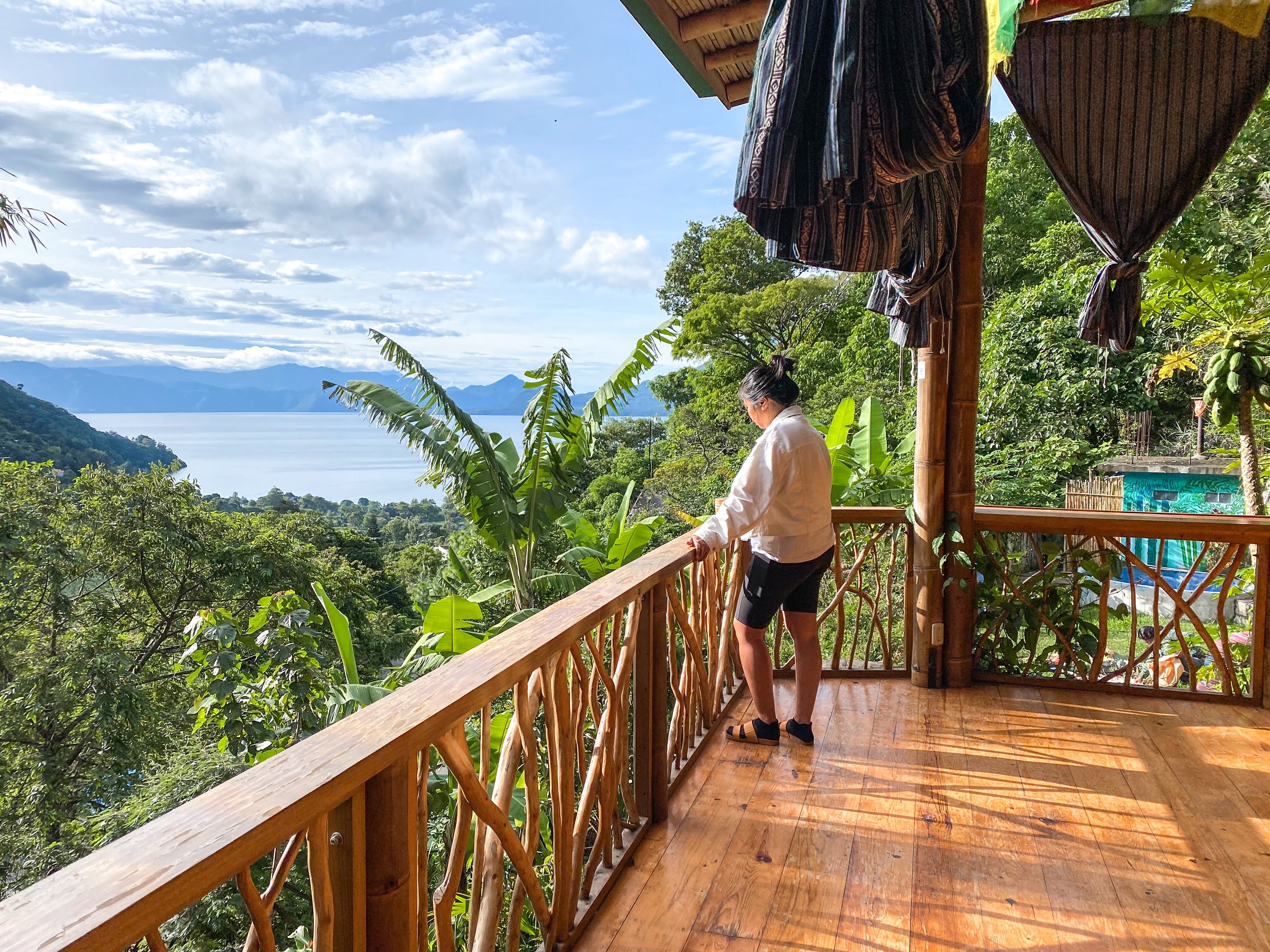Reading books set in Guatemala before you visit offers a unique and diverse literary landscape that reflects the country's cultural heritage and the resilience of its people. If you’re in the mood for an enthralling narrative of resistance, cultural belonging, or imaginative stories that blurs the lines between reality and fantasy, then these books about Guatemala will help you gain a deeper understanding of this beautiful complex country. We’ve compiled a curated list of books about Guatemala to get you started on your journey.
Here are our top picks for books about Guatemala:
I, Rigoberta Menchú
By Rigoberta Menchú
Rigoberta is a Guatemalan Mayan activist who narrates her story during the revolution that began in 1944, overthrowing the dictator in power, up until the U.S orchestrated a coup d’etat in 1954. Then the anthropologist, Elisabeth Burgos-Debray turned her words into text in the 1980s. As an indigenous leader, feminist, human rights activist, and winner of the Peace Nobel Prize, Menchú exposed the terrible and violent acts of the military regime in Guatemala.
The chapters of her book tell her story as a young child living being displaced from her home, along with her family, in search of a new place to live while working in hard labor plantations. She also includes beautiful descriptions and stories on the K’iche’ Mayan tribe, like their traditions, rituals, celebrations, and even hierarchy.
This book was one of the first descriptive illustrations of why the Maya community decided to go to war against the government in the 1950s.
Men of Maize
By Miguel Ángel Asturias
The title of the book was inspired by the Mayan sacred book Popol Vuh, which has the belief that human bodies were made out of corn. Thanks to this book, and its incredible implementation of magic realism, Asturias won the Guatemalan Nobel Prize in Literature in 1967.
The novel is divided into six different parts showcasing the contrast between the indigenous customs in the modernizing society of Guatemala. Outsiders find that Guatemala has amazing natural resources and strong man-labor opportunities, which sparks the desire to commercially exploit the “people of corn”. The story shows the imperialist domination of Europe, transforming the native traditions that existed in the Americas.
The Mayans Among Us: Mayan Women and Meatpacking on the Great Plains
By Ann Sittig and Martha Florinda Gonzalez
In The Mayans Among Us, Ann L. Sittig provides an in-depth examination of the lives and challenges faced by Mayan women who have left their homes in Guatemala to seek employment opportunities in the meatpacking plants of the United States. The book explores various aspects of their migration, including the reasons for leaving their home country, the journey to the U.S., and the realities of their lives and work once they arrive. Through the stories and experiences of these Mayan women, Sittig offers readers a deeper understanding of the complex and often challenging circumstances faced by immigrant workers, highlighting issues related to labor rights, immigration, and the human impact of economic globalization.
Ann L. Sittig is known for her scholarly work and research particularly in the context of Central American migrants working in the United States. She has also contributed to other academic publications and research related to migration, labor, and immigrant communities.
Silence on the Mountain
By Daniel Wilkinson
Daniel Wilkinson begins his journey to investigate the mysterious fire that took down a coffee plantation worker’s home in 1993. To get answers, Wilkinson has to dig into the unknown history of the country’s civil war that lasted 36 years – where approximately 200,000 people were either killed or disappeared.
Due to a sponsored military coup from the U.S., a plantation system was created for Guatemala’s Mayan natives to begin coffee bean picking for American and European markets. So many years of terror and violence in Guatemala forced them to stay silent to survive, up until Wilkinson was able to compel people to tell their intimate and heartbreaking stories.
The Beast: Riding the Rails and Dodging Narcos on the Migrant Trail
By Oscar Martinez
The Beast (La Bestia) is a non-fiction book that offers a harrowing and in-depth exploration of the perilous journey undertaken by migrants through Central America to reach the United States. The title refers to the network of freight trains that thousands of migrants use as means of transportation to travel through Mexico which are known to be notoriously dangerous. Martínez embarks on a firsthand investigative journey alongside the migrants, providing a compelling and intimate account of their experiences. The Beast offers a gripping portrayal of the human cost of migration, exposing the vulnerability and resilience of the migrants, as well as the social and political factors that drive this phenomenon.
Óscar Martínez is a Salvadoran journalist and author known for his investigative reporting and writing on issues related to migration, violence, and social injustice in Central America. He has gained international recognition for his powerful and in-depth storytelling, shedding light on the human stories behind some of the most pressing challenges in the region.
Jungle of Stone:
By William Carlsen
This details the extraordinary adventure of John and Frederick, two archaeologist enthusiasts traveling through Central America and Mexico in the 1840s. Their journeyed Belize, Guatemala, and Honduras by foot, donkey and and even horse to discover the ruins of Copan. Carlsen reveals the untold true story of the remains of an astonishing civilization believed to have existed at the same time as Romeancient Greek, which is now recognized as the birth of American archeology.
TIEMPOS RECIOS
BY MARIO VARGAS LLOSA
Tiempos Recios (English: "Fateful Times" or "Hard Times") revolves around real historical events that took place in Guatemala during the 20th century, particularly the 1954 US-backed coup that overthrew the democratically elected president, Jacobo Árbenz. The narrative intertwines the stories of several characters, some fictional and others based on real-life figures, who find themselves caught up in the political turmoil. Through their perspectives, the novel sheds light on the treacherous nature of power, international intrigues, and the consequences of meddling in the affairs of other nations.
Mario Vargas Llosa is a renowned Peruvian author and Nobel prize winner for his literary work, though in recent years there has been some controversy around his political leanings and social views.
IN THE MIDST OF WINTER
ISABEL ALLENDE
In the Midst of Winter fuses together the lives of three main characters: Evelyn Ortega, an undocumented immigrant from Guatemala; Richard Bowmaster, a human rights professor from Chile; and Lucia Maraz, a visiting lecturer from Canada. The story is set in Brooklyn, New York, during a snowstorm, which brings these three characters together unexpectedly. As the story unfolds, the characters find themselves involved in a series of events that stem from a minor car accident. This incident triggers a chain of events that forces them to confront their own fears, regrets, and vulnerabilities while forging unexpected connections with one another.
Isabel Allende is a highly acclaimed and influential Chilean-American author known for her prolific writing and storytelling. Her writing centers around strong female characters and explores themes of feminism, history, love, politics, and the immigrant experience. Her storytelling is a blend of magical realism, historical context, and deep emotional resonance. Better yet, she is a passionate advocate for human rights and social justice, using her platform as an author to raise awareness about important issues.
THE MOST BEAULTIFUL PLACE IN THE WORLD
BY ANN CAMERON
The Most Beautiful Place in the World tells the story of a young boy named Juan, who lives in a small village in Guatemala. Juan dreams of going to the United States, where he believes he will find the most beautiful place in the world. However, circumstances force him to confront the realities of his own life and appreciate the beauty around him. The novel explores themes of poverty, family, dreams, and self-discovery. As Juan encounters various experiences and people, he begins to understand that beauty can be found in unexpected places and that happiness and fulfillment are not necessarily tied to material wealth. The story highlights the importance of appreciating one's roots, valuing family and community, and finding contentment in the present. The book is a touching and uplifting tale that emphasizes the power of perspective and the richness of human connections, making it a compelling read for young readers and adults alike.
Ann Cameron is known for being a prolific and versatile American author who has written numerous books for children and young readers. She is particularly well-known for her engaging and heartwarming stories that often address important themes featuring a variety of diversity in her characters. Ann Cameron's dedication to creating thoughtful and imaginative stories for children has solidified her place as a beloved and respected author in the realm of children's literature.
THE PRESIDENT
BY MIGUEL Ángel Asturias
The President (El Señor Presidente) is a novel written by Guatemalan author Miguel Ángel Asturias and considered one of the most important works in Latin American literature. The novel is a powerful critique of the dictatorial regimes that plagued Guatemala and other Latin American countries during the early 20th century. Asturias draws heavily from his own experiences in Guatemala, where he witnessed the oppressive rule of dictators. The novel exposes the brutality and corruption of the regime, showing how the President's abuse of power affects the lives of ordinary people in the country. It is a haunting and powerful portrayal of the dark realities of authoritarian rule, making it a significant contribution to Latin American literature and a landmark work in the region's literary tradition.
Miguel Ángel Asturias played a significant role in Guatemalan politics and cultural affairs, using his literary talent to bring attention to the social and political issues affecting his country.
HOMIES AND HERMANOS
BY ROBERT BRENNEMAN
In Homies and Hermanos, Robert Brenneman, a sociologist and professor, dissects the lives of gang members and the influence of religion, specifically evangelical Christianity, in their lives and communities. The book provides an in-depth analysis of how evangelical Christianity has been both a driving force in gang members' lives, leading some to leave the gang lifestyle and reform, while also influencing the gang's internal dynamics. Brenneman sheds light on the complexities of gang culture, religious conversion, and social transformation in Central America, providing valuable insights into the struggles and possibilities for change in some of the region's most marginalized communities.
In addition to his work on gangs and religion, Robert Brenneman has contributed to sociological research on other topics, such as social movements, race and ethnicity, and the intersections of politics and culture in Latin America and beyond. As a sociologist, he has conducted extensive fieldwork and interviews with individuals and communities in Central America, providing a deeper understanding of the social issues and dynamics in the region.
By showing the significance, beauty, and power of the Mayan remains, there was a shift in the outdated assumptions about the West’s civilizations and their developments. Carlsen’s extensive research and personal journey through Mexico and Central America’s Mayan territory gave him the tools to build a unique and thrilling adventure important to enjoy before heading to Guatemala's Maya lands.
Reading books about destinations is a great start to immerse and understand the people and its streets, before even getting there. If the plots of these books did not give you enough curiosity about Guatemala’s culture and history, learn more about their local and magical cuisine fusioned with Indigenous, Hispanic, Caribbean, and African influences.
Ready to explore Guatemala? We’ve got you covered! Take a look at our 6-day Guatemala yoga retreat, an immersion in nature and local culture!




















Traverse Journeys is proud to partner with WellKind Guatemala, to whom we donate 3% of our trip sales from our yoga retreat in Lake Atitlan. Wellkind Guatemala, a non-profit program currently working in 8 towns along the northern shore of Lake Atitlán, empowering Kaqchikel Maya locals to enhance the region’s economy, ecology, and community. We are proud to donate to this NGO on all our small-group Guatemala Yoga Retreats.